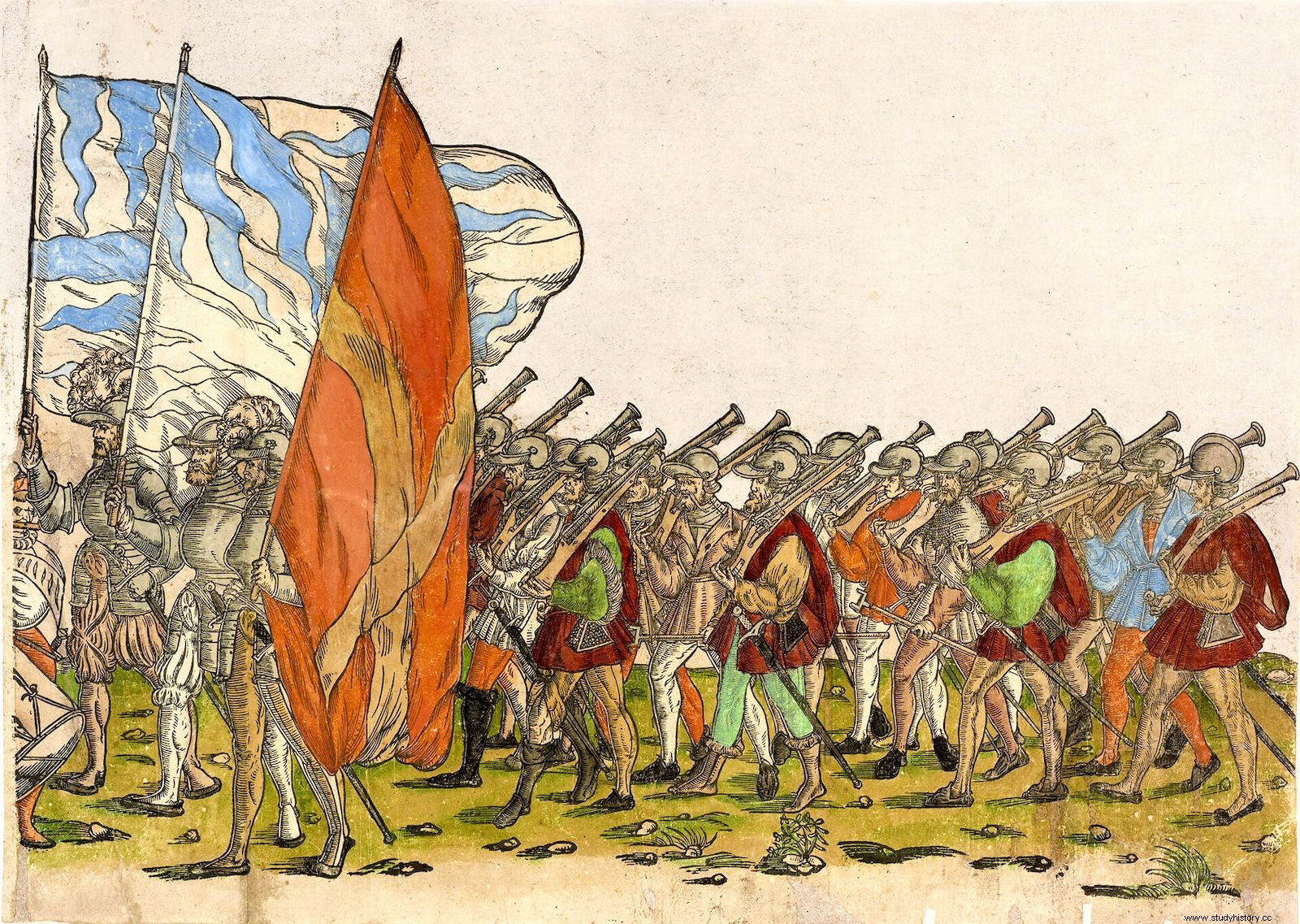
Early in 1521, the peace that had set end to the virulent but indecisive war of the League of Cambrai (1508-1516), threatened to collapse. The Treaty of Noyon, signed by Francisco I of France and the very young Carlos I, had certified a precarious balance of forces in Italy. The Spanish kept the Kingdom of Naples, conquered by the Great Captain, while the French Crown saw its conquest of the Duchy of Milan recognized after the overwhelming victory of Francis I at Marignano (1515). With the exception of the brief War of Urbino (1517) between Pope Leo X and Francesco Maria della Rovere, Duke of Urbino, peace was once again installed in a depleted Italy that soon thought it would forget the turbulence. The Florentine chronicler Francesco Guicciardini wrote in his Storia d’Italia that “although doubtful and full of suspicions, it seemed that [Italy] had Heaven, her own fate and fortune envious of her stillness or fearful that, if she rested longer, she would return to her former happiness.”
Indeed, the fates of international politics broke the fragile balance when, after the death of his grandfather Maximilian I, Charles I was crowned Holy Roman Emperor . Francis I, who also coveted imperial dignity and did not wish to be subjected to his rival – the Duchy of Milan was a fiefdom of the Empire – began to prepare for war. Despite further attempts by the French monarch to present his aggression as a preventive maneuver, Jean Barillon, secretary to Chancellor Antoine Duprat, makes the reason clear:"I believe that the first foundation of the war was the election of the emperor." The first French movements were buried. In the spring of 1521, taking advantage of the fact that Charles V was engaged in dealing with Luther in the convulsive Diet of Worms, at the same time that Castile was mired in the Revolt of the Comuneros, Francisco launched two covert invasions on the dominions of his enemy. On the one hand, he induced Robert III de La Marck, Prince of Sedan, to rebel against Charles and launch an offensive in the Low Countries across the course of the Meuse. In parallel, he sent a large army led by André de Foix to Lower Navarre, conquered and incorporated into the Crown of Castile in 1512. In the eyes of the other European monarchs, it was obvious that Francis had initiated the aggression . "The war -in the words of Barillon- was now open", and the eagle and the salamander, heraldic symbols of the two monarchs in dispute, were going to face each other directly.
The first feats of arms were favorable to the emperor, who easily defeated La Marck in the Netherlands and, in the Iberian Peninsula, saw his army achieve a decisive victory, in Noáin, on the Franco-Navarrese forces. Thus Francis I was drawn into a miscalculated conflict. Indeed, Charles V, who had sought the imperial crown for eminently defensive purposes, to prevent a hostile emperor from proceeding to dismember his territories, remembered the words of his chancellor, Mercurino Arborio de Gattinara:“Under the shadow of the imperial title , he could not only attend to his inherited territories and kingdoms, but also larger ones, increasing the empire until his monarchy encompassed the entire world. Although the emperor did not go so far in his immediate designs, he did see the occasion to recover the Duchy of Burgundy and expel Francis I from Italy.
The first Imperial successes
After the French initiatives failed, circumstances soon turned adverse for Francis. Charles V forged an alliance with Pope Leo X and with Henry VIII of England, which gave a total turn to events:the French, attacked by different fronts, had to remain on the defensive with no other support than the Republic of Venice. Charles went on the attack from the Netherlands while ordering his forces from Naples, under the command of Próspero Colonna and the Marquis of Pescara , to march north to join the papal troops, led by the young Federico Gonzaga, Duke of Mantua, and then advance on Milan. From the north would arrive a host of lansquenetes under the command of Georg von Frundsberg. Colonna and Gonzaga reached the outskirts of Parma on August 1 with 6,000 Italian infantry, 2,500 Papal Guardsmen, and 500 light horses. Hernando de Ávalos, Marquis of Pescara, led 2,000 Spanish infantry, 300 men-at-arms, and 300 light horses to the Venetian Domini di Terraferma to receive Frundsberg and prevent the Venetians from coming to the aid of the French. The Lansquenets force consisted of 4,000 Germans and 2,000 Graubünden, all on foot.
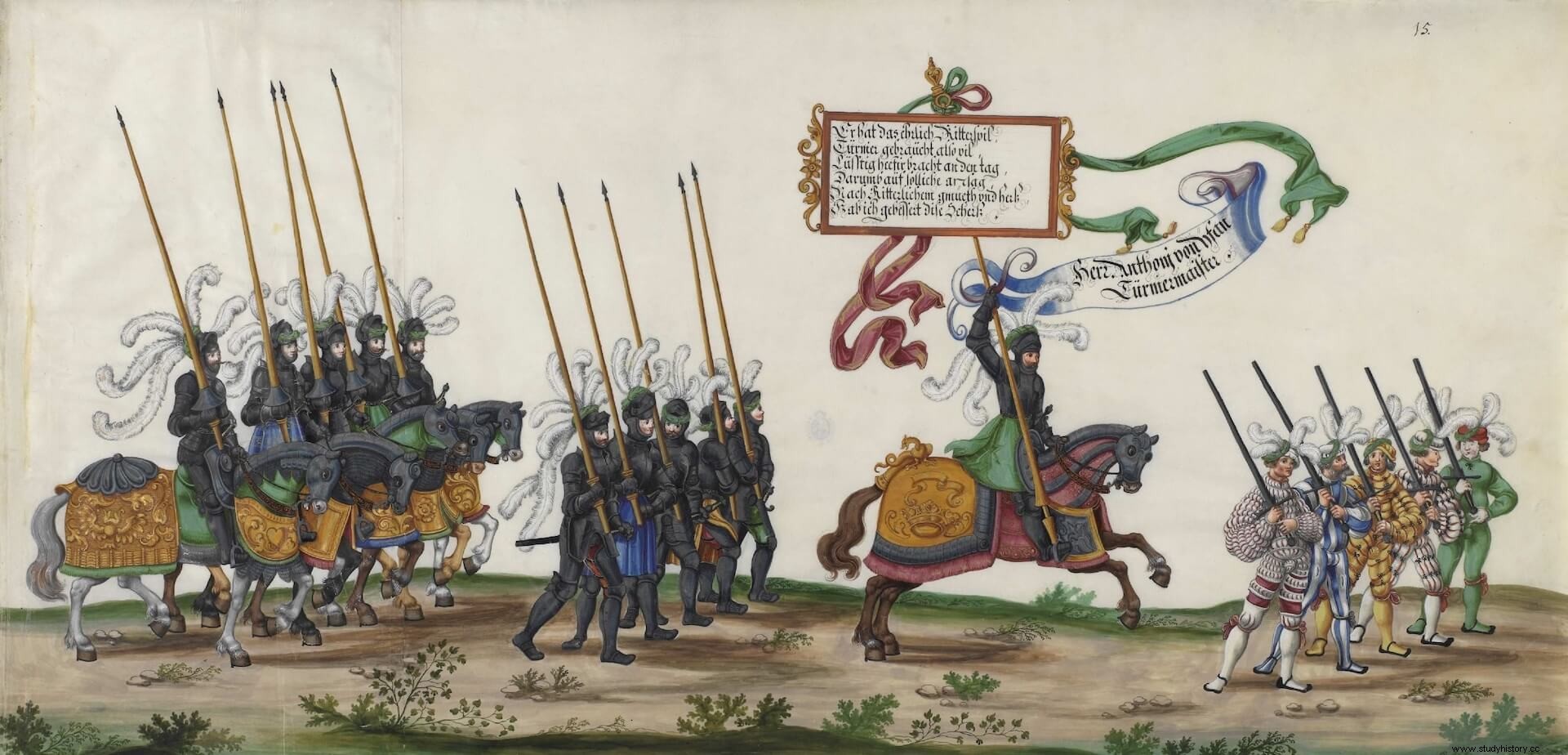
The situation of the French troops in Milan was extremely precarious Odet of Foix, Viscount Lautrec , who was supported by his brother Thomas de Foix, Lord of Lescun, had only 4,000 soldiers and the population was against him. Francis I, who had meanwhile managed to stop the imperial offensive in Picardy, immediately sent reinforcements:8,000 Swiss infantry, 5,000 Gascons, 6,000 French adventurers, and 1,000 light horses. Lautrec was only able to dispose of the first, for the defense of Parma, since the others were held at the Savoy border and did not arrive until September, after diplomatic pressure persuaded Duke Charles III to let them pass through his territories. The Swiss, furthermore, showed little inclination to obey orders, since Lautrec received no funds from the Crown and had to end up paying what he could out of his own pocket:“if I had waited for the provisions from there [France], there is nothing more certain that the king would have lost this dukedom,” he wrote to royal adviser Florimond Robertet on August 19.
The only immediate support the Gauls received came from the Venetian army of Teodoro Trivulzio, consisting of 8,500 Italian infantry, 500 men-at-arms, and 1,000 light horses. However, the lack of coordination doomed the Franco-Venetian strategy:imperial and pontifical forces crossed the Po unopposed , and then the Adda, which led them to the gates of Milan. On November 22 they took the city after a brief confrontation with Franco-Venetian forces and took Trivulzio captive. Lautrec did not want to commit his army and, leaving a few hundred men in the castle under the command of a Gascon captain, Monsieur Mascaron, hastily withdrew towards Cremona. The city of Como, and also Pavia and Alessandria della Paglia, fell shortly after into imperial hands, since the French garrisons were few in number and its inhabitants showed notorious Ghibelline –imperial– sympathies. The news soon spread, so Leo X learned of the victory shortly before he died. The French chronicler Martin du Bellay even attributed his death to the explosion of joy that he was seized with:“he took such joy that a cold and a continuous fever, in three days, led him to death; he was happy to die of joy ”.
The arrival of winter, with the usual suspension of operations, left the forces of Charles V and the Pope in power of the nerve center of the duchy, while the French and the Venetians controlled some of the outlying squares to the west and south of it. Both sides worked during the winter months to prepare for the campaign of 1522.
Campaign preparations
Francis I learned of the loss of Milan as soon as he arrived in Paris from Amiens at the end of the year. Immediately, the royal council made the decision to recruit ten thousand Swiss infantry and send three of the best heads of the kingdom to the dukedom:René de Savoy –better known as the “bastard of Savoy”–, grand master of the kingdom; Jacques de la Palice, Marshal of France; and a promising young man named Anne de Montmorency, who had already distinguished himself at Marignano. According to Roberto de La Marck, the conflict between egos was considerable:“the grand master called himself lieutenant general of the king; Monsieur de Lautrec too; they all wanted to be masters, because they had a long feud with each other.” It was not easy to recruit the Swiss, since, although Lucerne showed a good disposition, the same did not happen in Zurich and Schwyz, but in the end, according to Guicciardini, "the greed of private individuals, some of whom asked the king for pensions, others, old debts”, led the cantons to authorize the levy and, in the first months of 1522, they went down the San Gotardo and San Bernardo gorges towards Varese.
Colonna, for her part, received no more than four thousand Lansquenets reinforcements who arrived at the beginning of the year with Francesco II Sforza, Duke of Milan. However, the population was almost without fissures on the part of the imperialists, so that, in mid-February, Fernando Marín, abbot of Nájera and war commissioner of the Lombardy Army, wrote to Carlos V that morale, in Milan, was elevated:“all this city is so happy, that they are not afraid of losing anything they have gained even if XX milli suyços come, before […] [of] expelling all the enemies out of this state and Italy with the help of God and give the good fortune of Your Majesty”. In Milan, Colonna had 3,000 lansquenets, 4,000 Spanish infantrymen, 6,000 Italian infantrymen and 700 men-at-arms; Federico Gonzaga defended Pavia with 4,000 Italian infantry at the service of the new pope – Adrian VI –, 300 men-at-arms and 100 light horses; Parma was garrisoned by 2,000 lansquenetes, 1,000 Italian infantrymen and 200 men-at-arms commanded by Antonio de Leyva; in Alessandria there were 300 Italian infantrymen, 100 lances and 200 light horses under the command of the lord of Visconti; As he had a garrison of 1,000 Italian infantrymen and 100 light horses. Other towns also had small contingents.
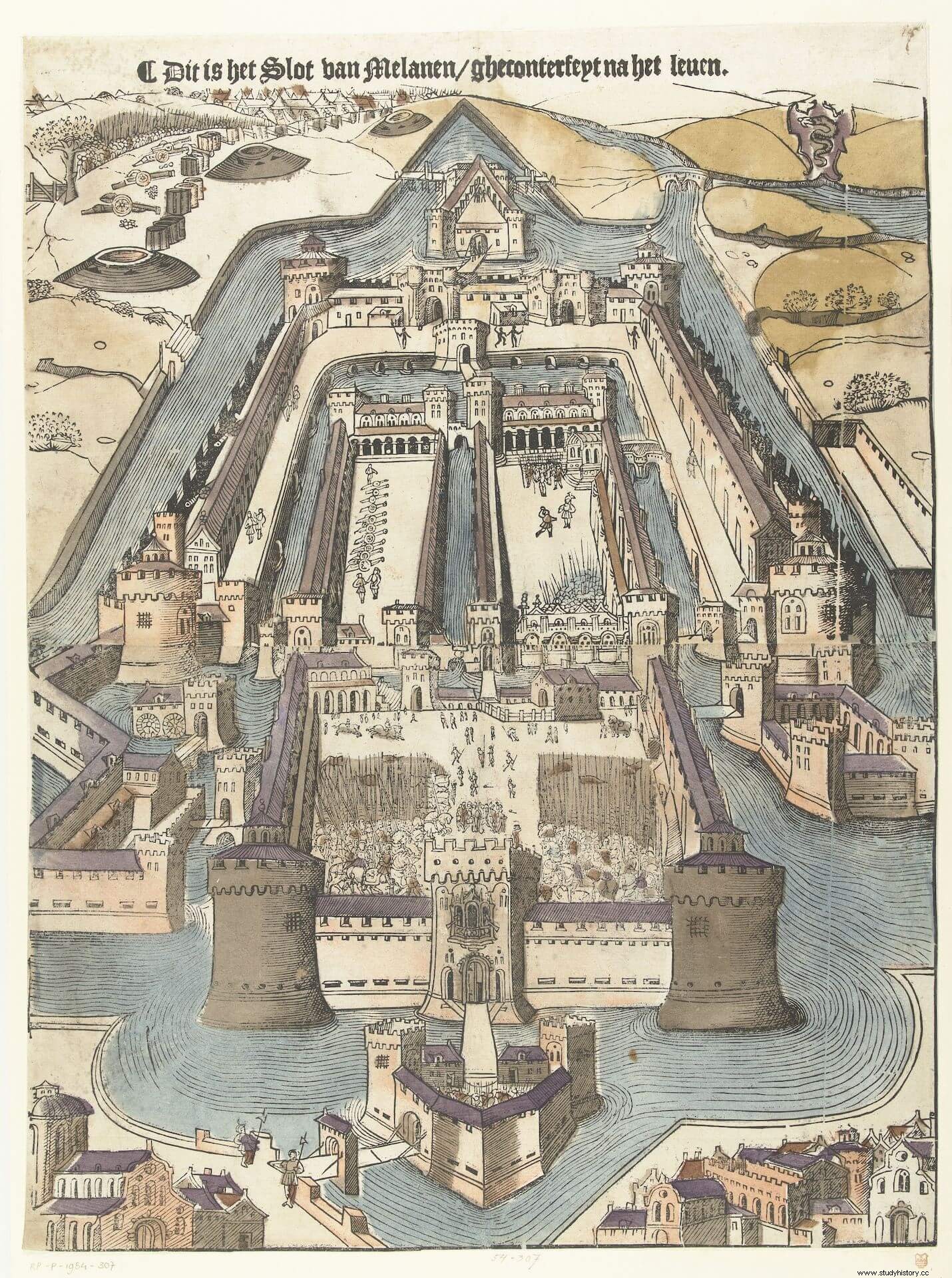
Colonna's strategy was to focus on the Milan defense , and for this he fortified the weak point of the city:the rear part of the ducal castle, where Lautrec presumably tried to help the starving French garrison. Colonna had two wide trenches built between the gates of Como and Vercelli, each with a reinforced parapet and a bastion equipped with artillery. In the words of Guicciardini:“they prevented at the same time that any help could enter the castle and that none of the besieged could leave.”
Skirmishes and single combat
The French army went into campaign towards the end of March. According to Roberto de La Marck, “it was a wonderfully beautiful and well-equipped army, [also] of what it had lacked before, mainly money, which is the main thing in war, and if you ask me why they were so well-supplied, I would say that's why the Lord Grand Master, who was head of finance, was there in person." The abbot of Nájera, on the other hand, did not hide his contempt for the Swiss infantry in his letters to the emperor:“these suyços byenen very reluctantly, poorly armed, broken, barefoot and poorly provided with victuals that they do not find what to eat for the whole day. Milanese". Be that as it may, in a few weeks the captains of Francis I assembled a large field, since Lautrec's troops were joined, before crossing the Adda River towards Milan, by the Black Bands of the condottiere Giovanni de Médicis , hired by Francesco Sforza, but who went over to the French side "incited by higher and more certain salaries by the King of France," according to Guicciardini.
In Monza, a few kilometers northeast of Milan, there was a meeting of Lautrec's hosts with Swiss reinforcements under the command of the bastard of Savoy, Marshal de la Palice and Anne of Montmorency, and with the Venetian army commanded by Francesco Maria della Rovere, Duke of Urbino, coming from Bergamo. Fernando Marín informed Carlos V of the opinion of a Spanish prisoner who escaped from the French camp about such troops:"Dyze that all the Benetian infantry bring, it can be two thousand and fifteen Italian men, not very well armed and who come from ill will and even making fun of the French who have come to do this business with so little gear and other things”. On the other hand, the abbot judged that the quality of the imperial troops was excellent:“the darmas people are very well armed and much byen on horseback, the infantry is all very well armed, especially the Spanish ones that apart from the weapons there are no infantry who are not there made a doublet of brocade cloth doro […], and all the willing and eager people to convatyr, a great victory is expected.”
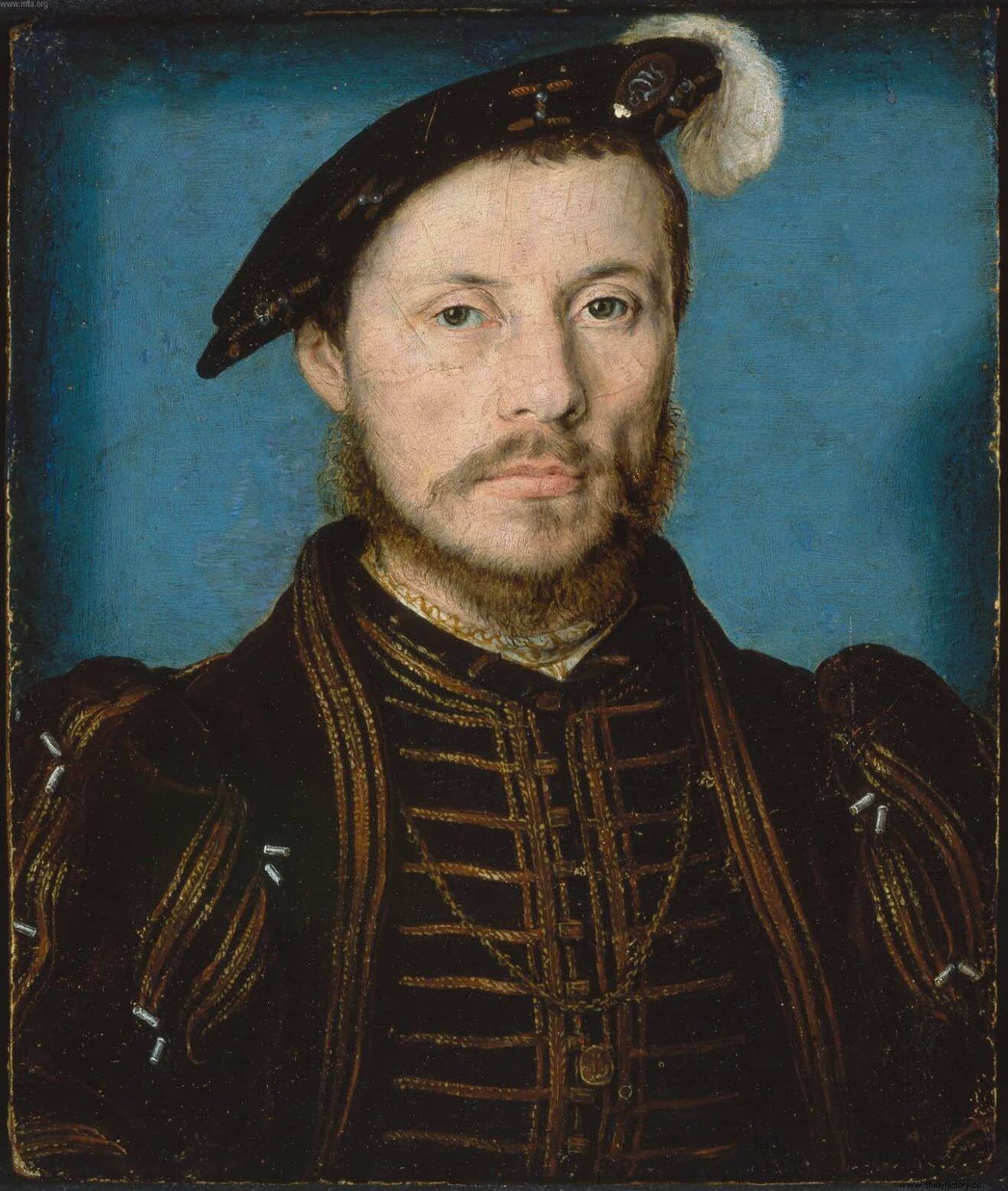
The statements of the imperial commissioner, regarding the capacity of the French and Venetian forces , contrast with what was written by the soldier Martín García Cereceda, according to whom they had an army of 30,000 Swiss infantry, 5,000 Gascons, 6,000 adventurers, 1,200 lances and 2,000 light horses, plus 8,000 Venetian infantry, 500 lances and 1,000 light horses. It is worth mentioning that, since 1515, each French lance, understood as a military unit, consisted of a man-at-arms, five intermediate cavalrymen, a page-at-arms and a servant. In the imperial case, the number of troops was smaller – it went from six to four combatants.
The fact is that the Franco-Venetians marched on Milan and approached the city from the castle side, just as Colonna had supposed. Some skirmishes took place without much loss on either side, though some were heartfelt. Two gentlemen from Lautrec's entourage, Marcantonio Colonna –brother of the imperial commander– and Camilo Trivulzio, were killed by the accurate shot of a Spanish artilleryman. According to García Cereceda, Próspero Colonna told those present:“Gentlemen, I am not crying for the death of my brother Marco Antonio; but I cry because he died in the service of the greatest enemy that I have”.
Lautrec, seeing that the imperials were very well entrenched in Milan, withdrew to the south and took up positions between this city and Pavia. While the skirmishes between the garrisons of these squares and the Franco-Venetian army, the French general posted Federico di Bozzolo with 7,000 infantry, 400 light horses, and four cannons to Gambolò, on the opposite bank of the Ticino River, to join forces with a corps of several thousand French and Gascon infantry. under the orders of Mr. de Lescun -brother of Lautrec-, who had landed several days before in Genoa and in which were the famous knight Pierre du Terrail, Mr. de Bayard, and Colonel Pedro Navarro, former servant of Fernando el Católico who he had changed sides after his capture by the French. From Gambolò, both corps marched against Novara and easily surrendered it. This maneuver, however, left the way clear for Francesco Sforza to take an additional 6,000 Lansquenettes from Trento to Milan, taking Croara Castle from the Venetians on the way, to then pass near Verona and Mantua, surrounding the Franco-Venetian positions. , and enter the duchy through Piacenza. Lautrec, in turn, advanced on Pavia, but Colonna anticipated him and sent three Spanish companies to reinforce the papal garrison. These troops, under the command of the veteran captains Cervera, Cervellón and Santa Cruz, "went through the hardest work that could be done, through the rodeos and ditches and waters that were on their way, without the danger they put themselves in when passing through a guard of the Venetians' camp”, in the words of García Cereceda.
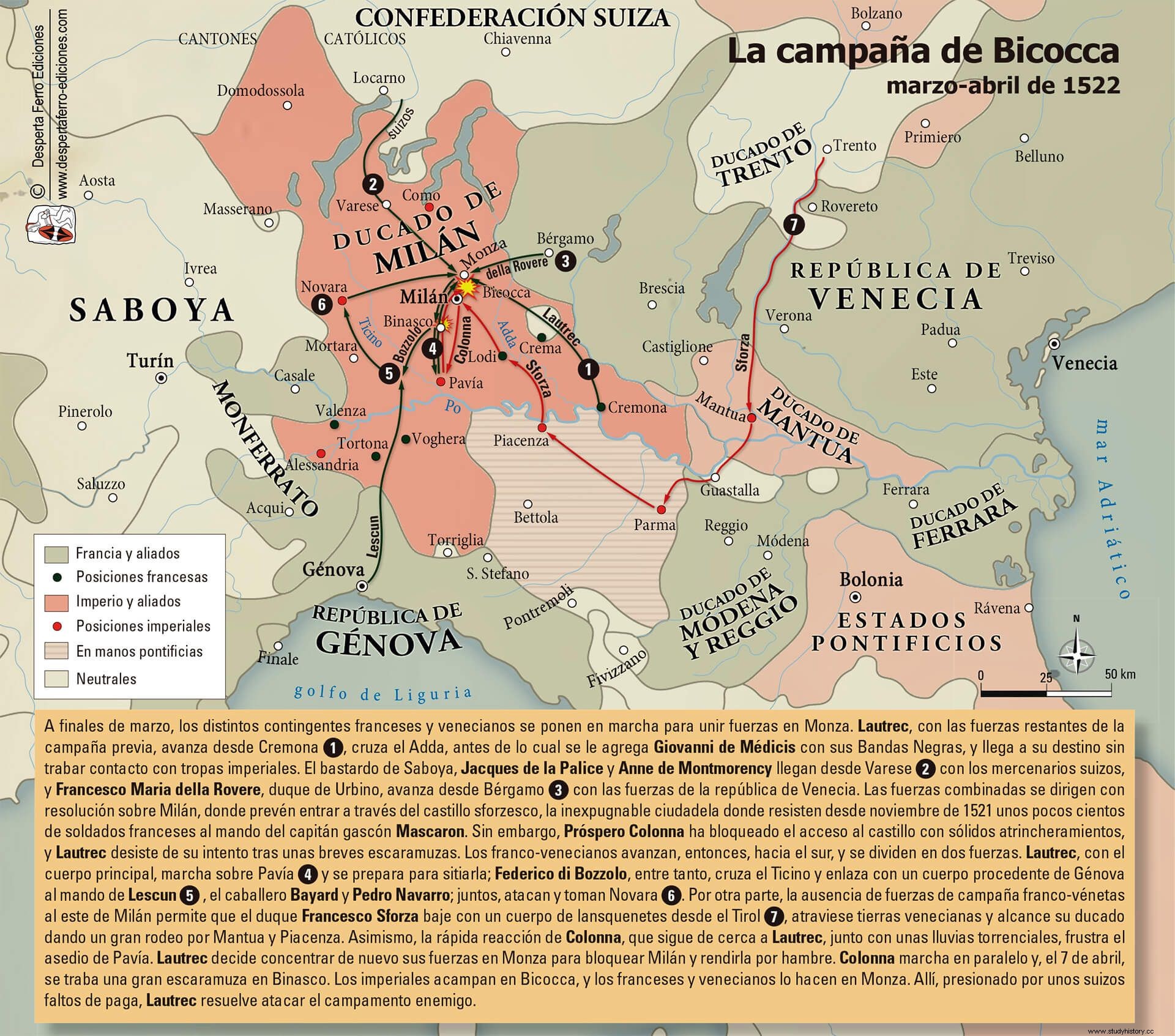
The spring rains they affected the Franco-Venetian army, which, short of supplies and with the coffers more empty than full, was not in a position to undertake a long siege. Martin du Bellay attests to this:“We were in this state for six or seven days, having in all of them skirmishes and broken lances, but such extreme rain fell that our provisions, which came from Lomellina to our field, could no longer arrive, because the Ticino was overflowing and all the streams had become torrents”. So, Lautrec had no choice but to order a return to Monza, where he hoped to stock up properly and receive funds from France to pay the Swiss, who were already showing concern.
On April 7 the march began, during which there was a major skirmish between troops from both armies near Binasco. The most outstanding fact of this clash was the singular combat between Giovanni de Médicis –Juan de las Bandas Negras , whose change of side was already notorious in Milan– and the Spanish cavalryman Juanote de la Rosa, “two of whom, after having broken their lances –says García Cereceda– come into each other's arms and fall to the ground; e Juanote de la Rosa, although very badly wounded in the head from the pick of the darmas axe, was the first to get up and take the horse of Juanin de' Medici, called "the Pope", a horse of great price. Juanin was saved on Juanote de la Rosa's horse, with the help he had from his people."
Apart from this knightly duel, the skirmish was inconsequential. The imperial coups in the French rear did not divert Lautrec from his new plan:since it was not feasible to besiege Milan, and not even smaller places like Pavia, he wanted to deprive the imperials and the pontificals of control of the countryside so that they could starvation accomplished what his troops could not. According to Guicciardini:
Prospero Colonna had no intention of dividing his army, let alone shutting himself back up in Milan, so, after marching parallel to the Franco-Venetian forces, he stood in the way between these and Milan in a village called Bicocca , “which are four houses in some flat countryside that are four miles from Milan”, according to the description of García Cereceda. Without wasting time, the Imperials began to fortify the place, already suitable for hosting an easily defended camp. Guicciardini describes it as “a very spacious farmhouse, surrounded by large gardens, which had, by definition, very deep moats. The surrounding fields are full of springs and streams brought, according to Lombardy usage, to irrigate the meadows.”
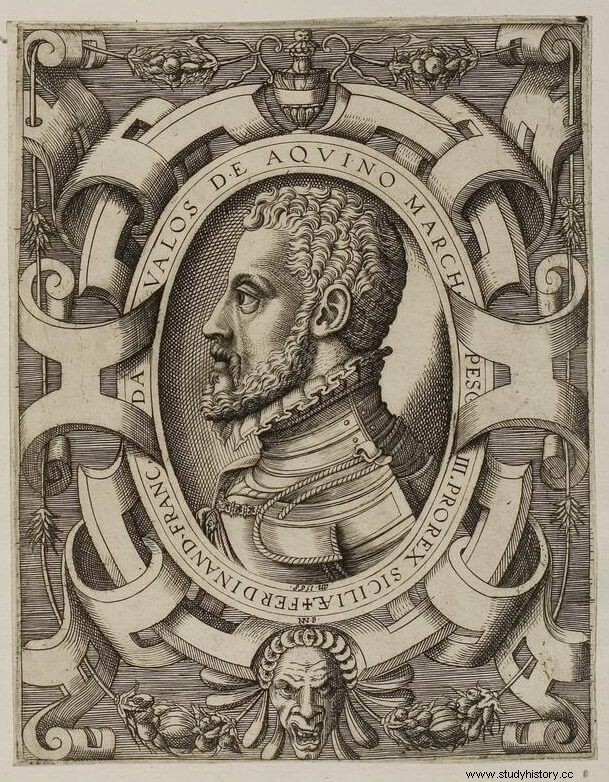
In Monza, meanwhile, the Swiss mercenaries lost patience and they informed their captains that they would return to their homes if they did not collect their back pay or if Lautrec did not order the imperial attack at once. Aware that this was extremely risky, since he had ordered reconnaissance of the enemy position, Lautrec asked the Swiss for patience, and so did the bastard of Savoy and Marshal de la Palice, since they "hoped to defeat their enemies without fighting the enemy." force them to abandon their fort by starvation, and that storming their fort was against all the reasons for war”, according to de Martin du Bellay. However, the Helvetians, encouraged by their captains, did not give their arm to twist, for which "Mr. de Lautrec, seeing himself commanded by those who should obey him, ordered that the following day, Quasimodo's day, the army be ready to leave," in Bellay's words. A few decades later, the famous chronicler Pierre de Bourdeille, lord of Brantôme, would claim that Lautrec's obligations exceeded his abilities and would compare him unfavorably with the Chevalier Bayard:
Pedro Vallés, chronicler of the Marquis of Pescara, would describe Lautrec as a good general:“truly in Captain Lautrech there were many enlightened virtues [...] in matters of war he was had in such an opinion that, disregarding the advice of others, he wanted rather to err for himself than to be taught by others”. On the occasion of Bicocca, however, events clearly overtook the French from the days before the battle. Neither did the Venetian commander, Francesco Maria della Rovere, Duke of Urbino, nor Juan de las Bandas Negras, nor any other captain of the Franco-Venetian army, certainly manage to tame the Swiss.
The Battle of Bicocca
On April 27, before dawn, the French forces, led by Swiss mercenaries, left their cantonments around Monza and headed for Bicocca. The imperial outposts quickly warned Colonna:"being at this this morning, we are willing that the enemy come with all deliberation to fight this army, and, ansy, then all the people were put in order in the same lodging that they had", the abbot of Nájera would write to Carlos V. Without wasting time, Colonna gathered his council:Hernando de Ávalos, Marquis of Pescara; Vespasian Colonna, Duke of Traetto; Ferrante Castriota, Marquis of Civita Sant'Angelo; the Spaniards Antonio de Leyva and Hernando de Alarcón; Ferrante di Capua, Duke of Termoli; and Georg von Frundsberg, commander of the lansquenetes. The unanimous decision was to wait in the covered entrenchments and accept battle against the Franco-Venetian army.
The imperial position at Bicocca it was easily defended:the right was protected by a flooded ditch that ran parallel to the road to Milan, and the left and rear by two ditches and a rivulet overflowed by the rains. The front was defended by a sunken road that served as a moat, behind which Colonna had ordered an earthen parapet raised to cover his squads. The Spanish arquebus, under the command of Pescara, stood in the front line behind the parapet, while the bulk of the infantry, both Spanish and German, formed four squads behind them. To prevent the Franco-Veneti from outflanking the position on the right, where there was a bridge that gave access to the imperial rearguard, Colonna posted behind him, in front of one of the ditches, three companies of Spanish infantry, 200 men-at-arms and 200 light horses under the orders of Antonio de Leyva and Pedro de Cardona, count of Golizziano, in addition to an advance guard of 400 men-at-arms and some Spanish gunmen by the bridge. The artillery was located on platforms of earth and had a magnificent view of the front from which the enemy forces would soon approach.
Upon coming within sight of Bicocca, Lautrec ordered the Chevalier Bayard and Pedro Navarro to go ahead to reconnoiter, and meanwhile formed his forces for battle. Montmorency would lead the right wing; Lautrec himself, seconded by the bastard of Savoy, Jacques de la Palice and Galeazzo Sanseverino, the center; della Rovere would remain in the rear with the Venetian troops, and Lescun would command the men-at-arms, which he formed on the left wing and whose soldiers, to confuse the imperials, wore white coats with red crosses on their armor. The shock force consisted of three formidable squadrons of Swiss pikemen with characteristic names, seconded by another of Gascons and a fourth made up of adventurers and Italian companies:“thus the squadron of the bull and the one of the cow and the one of the calf were made , and a squadron of five hundred lances and a small squadron of Gascon infantry; and [Lautrec arranged] for the rest of the other people to form a squad”, wrote the Spaniard García Cereceda. In front of these troops the Black Bands of Giovanni de Médicis had to march, formed by light horses, arquebusiers on horseback and some infantry, with the task of harassing the imperials everywhere and keeping them fixed in their entrenchments. Pedro Navarro would march behind them with a group of sappers to breach the parapets of the camp. As for Lescun, who personally led a large squad of men-at-arms seconded by a smaller one commanded by the lord of Pontdormi, he had the mission of outflanking the imperials on the road to Milan and crushing their rearguard.
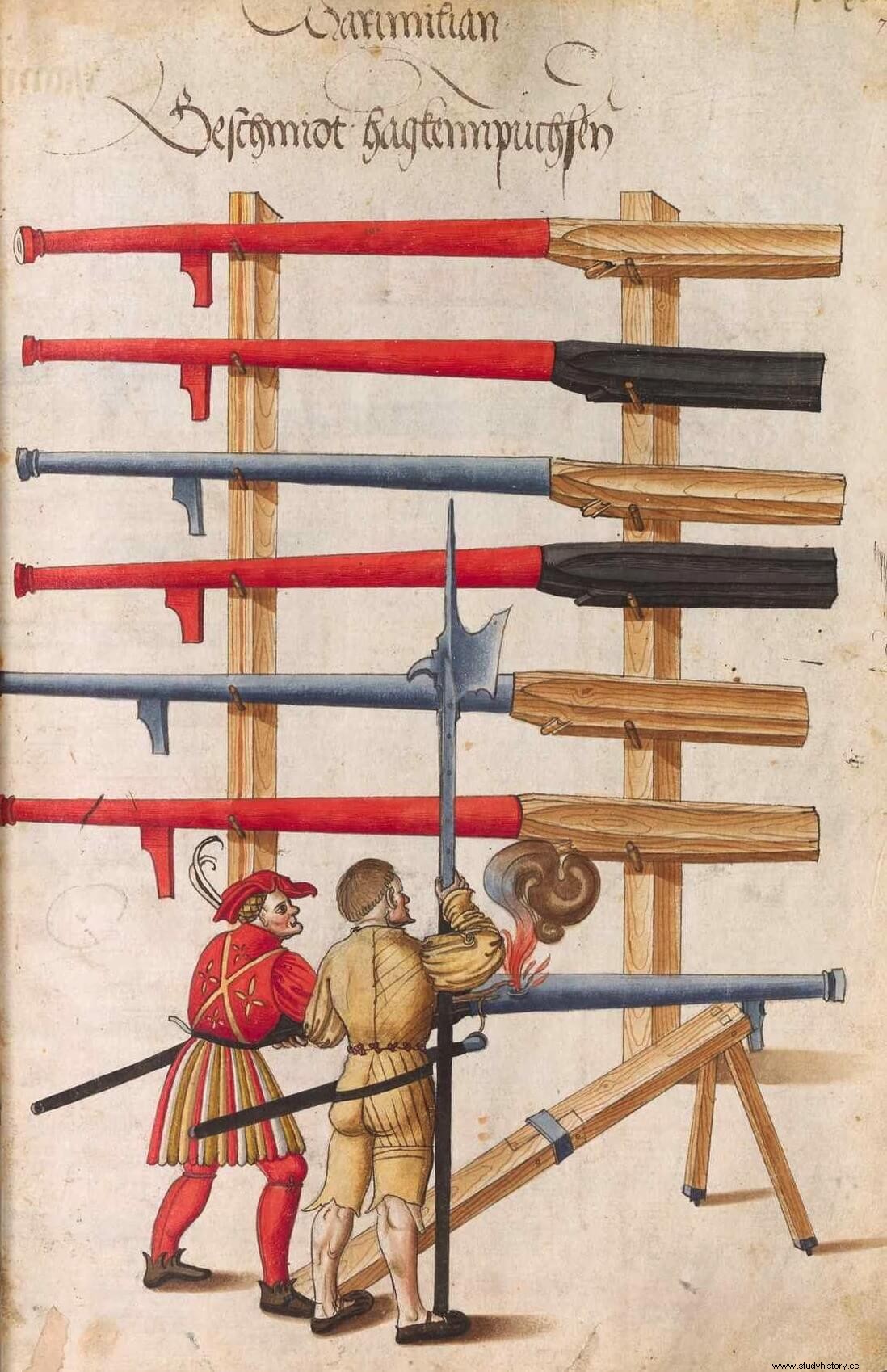
The battle began with a profuse exchange of artillery fire that favored the imperials. The abbot of Nájera, present at the contest, wrote in his report to Carlos V that “as the enemies appeared, the artillery began to play on one side and on the other; theirs did nothing to ours; ours has done a lot of damage, especially to people on horseback”. Indeed, the first to enter the fray were the men-at-arms of Lescun and Giovanni de Médicis with their fearsome Black Bands, who appeared among the trees along the road to Milan. Pescara sent Captain Castaldo against the Medici people with his company of light horses and a confused skirmish broke out in which the imperials prevailed, which prevented the Medici and his men from discovering the enemy's defensive device. However, then the Swiss squadrons and the bulk of the Franco-Venetian army appeared. One of the three great groups of Swiss pikemen, divided into two columns, one headed by Arnold Winkelried von Unterwalden and the other by Albert von Stein, under the overall command of Anne de Montmorency – who marched on foot, pike in hand, with a a retinue of young French noblemen eager for glory – he advanced resolutely towards the imperial position. The artillery tore great gaps in their ranks and shattered the points of their pikes, but the Swiss momentum did not let up. The worst for them, however, was yet to come. Pescara had ordered his Spanish arquebusiers, deployed in four rows, to fire successively and continuously – the first attested use of this tactic. In the words of Pedro Valles:
Reaching the edge of the sunken road, the Swiss pikemen discovered to their surprise that a ditch separated them from the enemy and were greeted with a close volley of arquebuses that killed hundreds. What they did not expect is that, after this one, another would arrive immediately, and then another, and so on. According to García Cereceda:"The Spanish rifle and arquebusiers begin to believe in them, and in such a way that more than two thousand esguízaros died before they came to blows." To say of Roberto de La Marck:“When they arrived at the fort and descended into the ditches, they found it so strong that they could not pass forward and they all saw themselves lashed by the shotguns, the arquebuses and their heavy artillery; [the position] was stronger than a village.” Winkelried's squadron was shattered on the spot; Albert von Stein's, on the other hand, jumped onto the sunken road and climbed the parapet, despite multiple casualties, until he came face to face with Georg von Frundsberg's squadron of lansquenets, "a man of great body and great strength" , in the words of Pedro Valles. The Spanish pikemen dropped to the ground to avoid the shots of the Swiss, whose vanguard engaged in a deadly clash of pikes with the Lansquenets as Stein lunged at Frundsberg. This is how García Cereceda describes the duel to the death between the two:
Fall Stein, the Imperial Lanskenets , aided by Spanish infantrymen who, without order from their commanders, threw themselves from the top of the parapet against the left flank of the Swiss squadron, finished off this troop, whose survivors fled in disarray, leaving behind their precious horn, which the imperials took to Colonna as trophy. Some, yes, kept the courage enough to rescue Montmorency, who had fallen unconscious on the sunken road. Nearly all the young noblemen who accompanied him - the Count de Montfort, the lords of Miolans, de Graville and Launay, and many others - lay dead, although he would soon recover and live for many more years, until he was shot down with a pistol. seventy-four, commanding the Catholic and Royal Army at the Battle of Saint-Denis (1567), during the French Wars of Religion. El día de Bicocca, entre tanto, Lautrec observaba apesadumbrado el desastre, ignorante de que, mientras este se desarrollaba, su hermano había logrado flanquear la posición imperial . Así era; mientras la arcabucería española destrozaba las columnas suizas, Lescun había caído de improviso con los hombres de armas y la infantería de las Bandas Negras sobre las tropas que defendían el puente que cruzaba la zanja inundada y, tras desbaratar a los caballos ligeros de Ambrosio Landriano, al que tomaron prisionero, se habían lanzado sobre el bagaje de Colonna.

Por un momento se desató el pánico en la retaguardia imperial, pero para cuando Lautrec envió su escuadrón de infantería gascona a explotar la brecha, ya era tarde. La artillería ligera del campo imperial, montada en soportes de madera, desorganizó las bandas de hombres de armas de Lescun y la infantería italiana de Juan de las Bandas Negras, que se vieron atacados luego por la caballería de Antonio de Leyva y de Pedro de Cardona . Peor aún, de improviso sonaron trompetas a sus espaldas:era Francesco Sforza, que acababa de llegar desde Milán con abundantes refuerzos. En palabras del abad de Nájera:“de la otra parte de un fosso, estava el Duque de Mylan que a la ora avya llegado con syete o ocho myll ynfantes y más de dos myll caballos ligeros y de armas”. Lescun y sus caballeros, cogidos entre dos fuegos, vendieron cara su piel. “Señalado por los vestidos, y por las plumas, y jaeces” –escribiría Pedro Vallés–, este se batió con valentía, al igual que el caballero Bayard, Federico di Bozzolo y otros muchos gentilhombres. Lescun perdió su caballo y recibió una estocada en el rostro a través del visor del almete, pero al fin, tras una agónica lucha, y a costa de numerosas bajas, los principales comandantes lograron escapar de la encerrona. Por parte imperial, las bajas fueron también elevadas. La más sentida fue la del conde de Golizziano:una saeta disparada por un ballestero francés lo alcanzó en un ojo a través del visor del casco y le atravesó el cerebro, matándolo al acto.
En el frente, entre tanto, Pescara advirtió que era el momento de caer sobre los suizos en retirada y acabar con los supervivientes antes de que se reagrupasen. Sin embargo, dado que Colonna estaba atendiendo la retaguardia, los lansquenetes se negaron a obedecer y reclamaron con sorna las tres pagas que se les adeudaba. Pescara encomendó entonces al capitán Ginés que tomase tres compañías de infantes españoles y persiguiese a los suizos. Así lo hizo este, y con tanta prisa que, en cuestión de minutos, sus hombres llegaron hasta los cañones franceses , que Lautrec había ordenado ya retirar. Giovanni de Médicis, que cubría la retirada de los suizos, cargó entonces con sus caballos ligeros y algunas bandas de infantería sobre los españoles, que de pronto vieron cómo se cambiaban las tornas y perdieron a su capitán en la aciaga contienda. Por fortuna para ellos, un colérico Colonna ordenó a la caballería que corriese en su auxilio y, juntos infantes y hombres de armas, acabaron por poner en fuga a Juan de las Bandas Negras y su gente, a los que el duque de Urbino y las tropas venecianas, que se mantenían frescas, abandonaron a su suerte. Tras dos horas de combate, los imperiales cantaron victoria y volvieron a Bicocca con los despojos.
Alrededor de 3000 suizos, entre ellos de catorce a veintidós capitanes, yacían esparcidos en el camino hundido o el prado frente a este. También habían caído cientos de hombres de armas, caballos ligeros e infantes italianos. Las pérdidas imperiales, salvo en la acción de la retaguardia, habían sido insignificantes.
La lección que Francisco I no aprendió
Tras la derrota sufrida, el ejército franco-véneto se desintegró quickly. En Monza, Lautrec se ofreció a desmontar parte de sus hombres de armas para garantizar la seguridad de los acantonamientos suizos. No obstante, las terribles bajas sufridas habían hundido la moral de los helvéticos, que decidieron regresar a sus hogares. Menciona Martin du Bellay que, “el martes, los suizos nos abandonaron y se retiraron a su país, y con ellos el gran maestre bastardo de Saboya, el mariscal de Chabannes [Jacques de la Palice] y el señor Galeazzo Sanseverino”. También un abatido Lautrec se agregó a esta mermada y desmoralizada hueste que, dividida en pequeñas partidas, muchas de ellas sin oficiales, cruzó el río Adda en Trezzo y volvió a Suiza atravesando la provincia veneciana de Bérgamo. Francesco Maria della Rovere se refugió con el ejército de la señoría de Venecia en Brescia; Lescun y Giovanni de Médicis alcanzaron Cremona, y Federico di Bozzolo, con el resto de la caballería, buscó seguridad tras las murallas de Lodi. Montmorency se allegó a Venecia para tratar de impedir el derrumbe –que acabaría produciéndose inevitablemente– de la alianza franco-veneciana. La tarea más penosa era la que Lautrec tenía ante sí, pues, en palabras de Guicciardini, regresaba a su país:
En efecto, Francisco I recibió las noticias con semblante lúgubre. “Os aseguro que el rey estuvo muy descontento cuando supo de las nuevas”, escribió Robert de La Marck. Lautrec pudo considerarse afortunado, dado que el único castigo que le impuso el Valois fue negarse a recibirlo. A la postre, cuando tuvo ocasión de comparecer ante el rey, lo que hablaron llevó a Francisco I a descubrir que una remesa de 400 000 escudos que había destinado al pago de su ejército de Italia, debido a las intrigas entre distintas facciones cortesanas, jamás había salido hacia su destino. Por ello, el monarca perdonó a Lautrec, aunque tuvo la prudencia de destinarlo a Gascuña y reemplazarlo en el mando de sus ejércitos en Italia por el almirante Bonnivet.
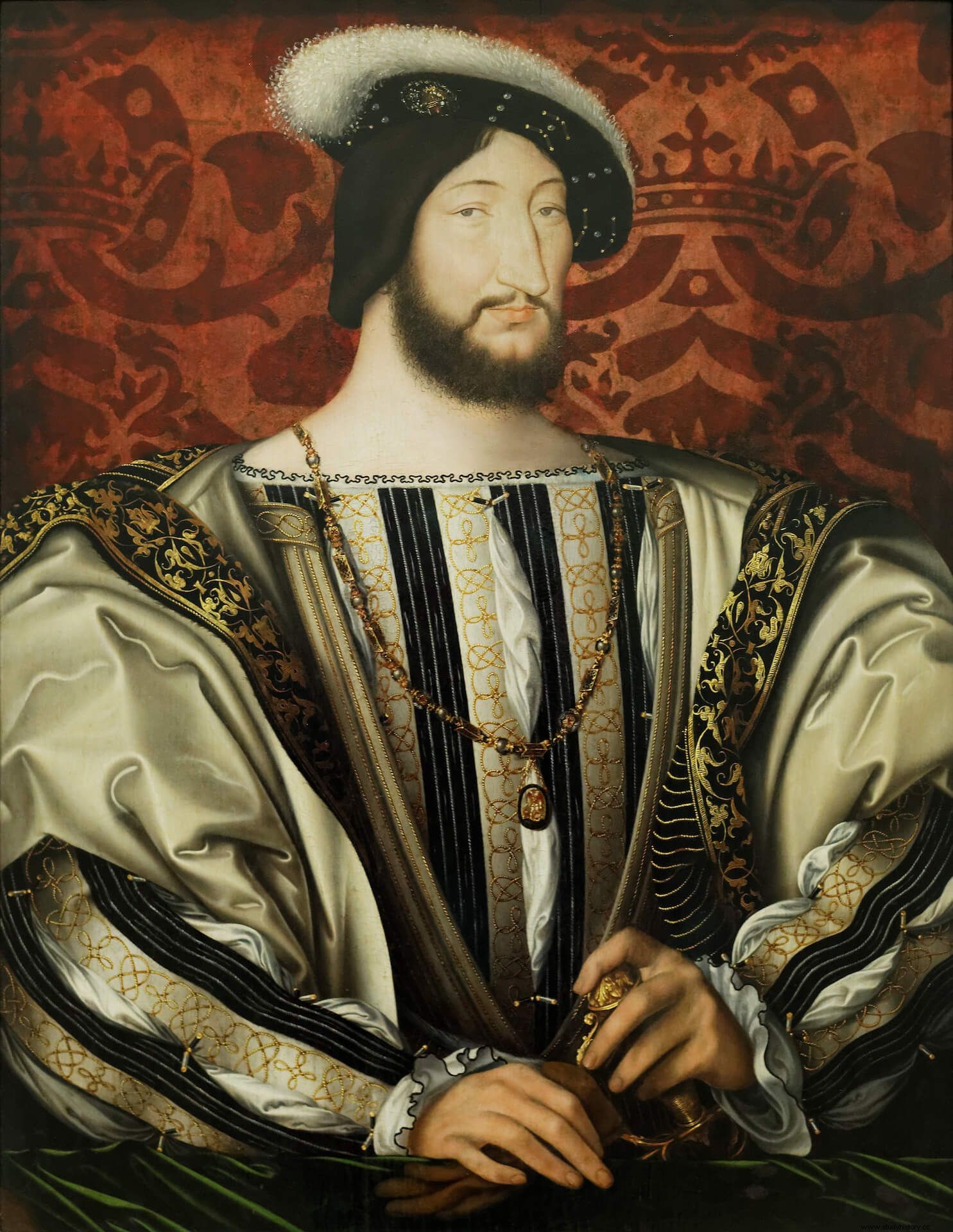
En el campo imperial se celebró la victoria por todo lo alto . Cremona cayó poco después, y los venecianos prácticamente estaban fuera de la guerra, lo que daba a todos grandes esperanzas de concluir victoriosamente la contienda. La guarnición francesa del castillo de Milán se rindió en la primavera de 1523, cuando solo quedaban 45 defensores con vida. Por otra parte, a pesar del éxito, el marqués de Pescara “apenas mostrava alegria alguna, ni en el animo, ni en el rostro, porque ayrado y casi que llorando se quexava que por la obstinacion de los tudescos se le uviese ydo de las manos una victoria de gloria incomparable”. Dicha victoria decisiva llegaría tres años después en la batalla de Pavía, en la que Hernando de Ávalos tendría por fin su triunfo aplastante. Mientras tanto, las lecciones que de Bicocca pudieran haber extraído los franceses cayeron en saco roto. Francisco I siguió con su fe inquebrantable en sus hombres de armas, sus piqueros suizos y su artillería pesada, y todavía dos años después, tras sufrir Bonnivet una dura derrota en el río Sessia –en la que cayó Bayard de un escopetazo–, no dudaba en atribuirlo a la poca pericia del general, y no a razones de índole táctica. Según el cronista Juan de Oznaya:
Lo advirtiese o no el rey de Francia, Bicocca y Pavía transformaron decisivamente el arte de la guerra. El sólido cuadro de picas y la caballería acorazada no eran ya rivales para las flexibles formaciones de arcabuceros y piqueros españoles. Comenzaba el reinado del tercio.
Fuentes
- Barrillon, J. (1899):Journal de Jean Barrillon, secrétaire du chancelier Duprat, 1515-1521 , Vol. II. Paris:Librairie Renouard.
- Bellay, M. du (1569):Les Mémoires de Mess. Martin Du Bellay, contenans le discours de plusieurs choses advenues au royaume de France depuis l’an 1513 jusques au trespas du roy François Ier . Paris:P. L’Huillier.
- García Cereceda, M. (1873):Tratado de las compañas y otros acontecimientos de los ejércitos del Emperador Carlos V en Italia, Francia, Austria, Berbería y Grecia, desde 1521 hasta 1545 , Vol. I Madrid:Sociedad de Bibliófilos Españoles
- Guicciardini, F.; Felipe IV (trad.) (1890):Historia de Italia; donde se describen todas las cosas sucedidas desde el año 1494 hasta el de 1532 , Vol. V. Madrid:Librería de la Viuda de Hernando.
- Marck, R. de La (señor de Fleuranges) (1913):Mémoires du maréchal de Florange, dit le Jeune Adventureaux , Vol. II. Paris :Renouard, H. Laurens, successeur.
- Pacheco y de Leiva, E. (ed.) (1919):La política española en Italia; correspondencia de Don Fernando Marín, abad de Nájera, con Carlos I , Vol. I. Madrid:Impr. de la Revista de archivos, bibliotecas y museos.
- Vallés, P. (1558):Historia del fortissimo, y prudentissimo capitan Don Hernando de Aualos Marques de Pescara con los hechos memorables de otros siete exceletissimos Capitanes del Emperador Don Carlos V Rey de España, que fueron en su tiempo . Anvers:Juan Steelsio.
Bibliografía
- Oman, C. (1937):A History of the Art of War in the Sixteenth Century . London:Methuen &Co.
- Potter, D. (2008):Renaissance France at War Armies, Culture and Society, c. 1480–1560 . Woodbridge:Boydell Press.
- Tracy, J. D. (2010):Emperor Charles V, Impresario of War:Campaign Strategy, International Finance, and Domestic Politics . Cambridge:Cambridge University Press.
